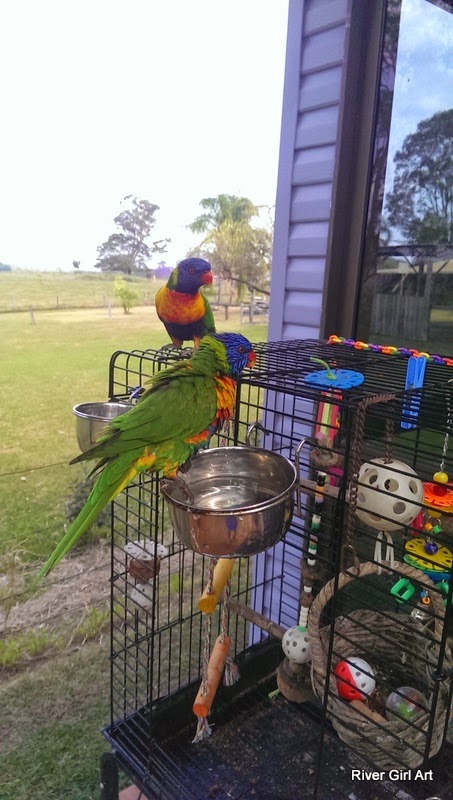My mother and I went with our local home school group to a farm yesterday called Figtrees organic farms. We were greeted by the farm manager Henry and his duck Dorothy!
Henry very kindly offered us all a delicious morning tea of organic pies and sausage rolls, they are just starting to supply them as well as their lovely beef.
Henry very kindly offered us all a delicious morning tea of organic pies and sausage rolls, they are just starting to supply them as well as their lovely beef.
While we were waiting for everyone to arrive there was plenty to see and do.
Henry talked to us about growing different types of grass on the farm,
and how different grasses do better in different area's
It is really a grass farm not a cattle farm, and they focus more on managing the land and environment in a holistic and healthy way, the beef is a bonus really and the cows are workers on the farm.
The farm is one thousand acres on the mighty Clarence river.
They use no chemical fertilizers or pesticides, only natural minerals and oils
to combat pests, while the cattle provide the fertilizer.
To increase diversity to the pasture,
Henry adds seeds to the cows mineral lick so they will
spread the seeds right where they are spreading the fertilizer,
these are very hard working cows..
We all piled in the back of the Utes to travel around the farm
it was a good way to transport our group around the muddy farm.
The trailers are a crucial part of the management of the cattle they are set up to supply the cattle with salt and Himalayan rock salt and a Pat Colby lick that Henry makes.
The trailers also have bars wrapped in carpet that Henry soaks with natural oils and the cows rub along the bars to get the pest repellent oils right where they want it and the green bag is a sulphur dust bag they also self administer. Sometimes it has diamateous earth in it. The cows are clever and learn how to manage these things themselves, they also teach each other and their babies.
Here are some of the hardworking cattle.
They will soon have some more co workers when the farm introduces organic pigs in the near future to increase the diversity and Henry is growing a flock of baby guinea fowl to work with the pigs.
They will soon have some more co workers when the farm introduces organic pigs in the near future to increase the diversity and Henry is growing a flock of baby guinea fowl to work with the pigs.
He has millions of other workers on the farm as well,even though everything looks quiet and calm out there, it is actually really busy and some of the hardest workers are the dung beetles. you can see some some dung beetle eggs that I found. They are not really eggs but balls of manure with a single larvae growing inside.
This is a baby dung beetle.
He will have a very important job on the farm when he hatches,
they take the poo down into soil, and that makes the soil better, it fertilizes the soil and it builds up the organic matter to feed the other workers on the farm, the earth worms. By burying the manure they also break the life cycle of lots of harmful pests like the buffalo fly.
We put cow poo in a bucket and watched all the beetles float to the top,
so we could see all the different varieties of dung beetle and the ages and stages..
There were so many.
We had lunch at the wetlands,
a beautiful peaceful area
and we saw black swans down on the water and pelicans circling above.
All that water was once drained to be grazing land but with modern thinking and realizing the importance of each part of the cycle this farm has made a beautiful area for the wildlife and the surrounding people and also manages to divert and clean lots and lots of storm water run off that would otherwise end up in the river.
After lunch we just had to climb into one of the many fig trees on the farm.
Every year, 500 trees are planted on the farm.
We all learnt a lot that day
we thought we were going to visit a cattle farm but it turned out to be so much more.



































